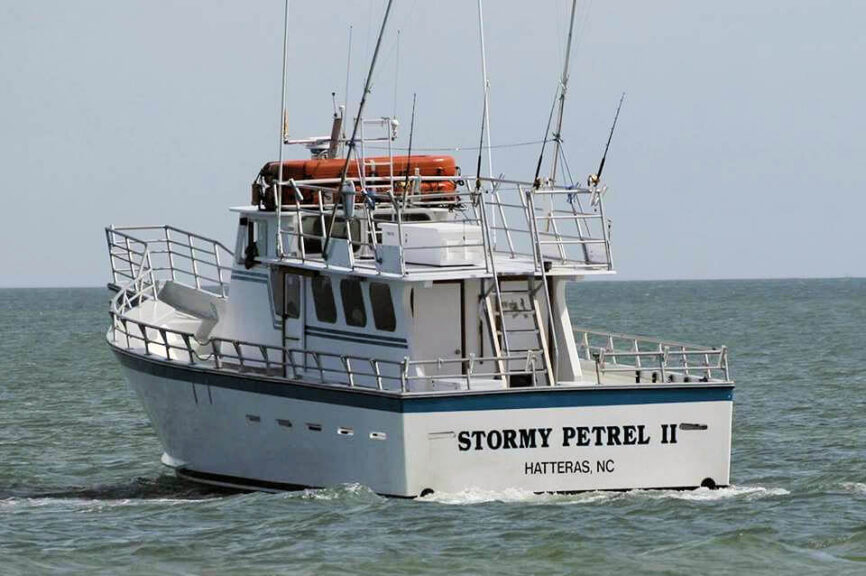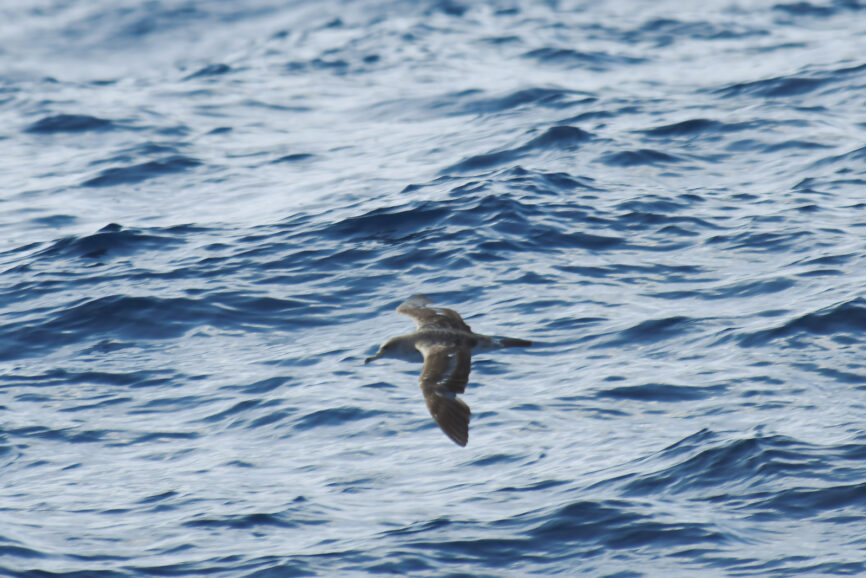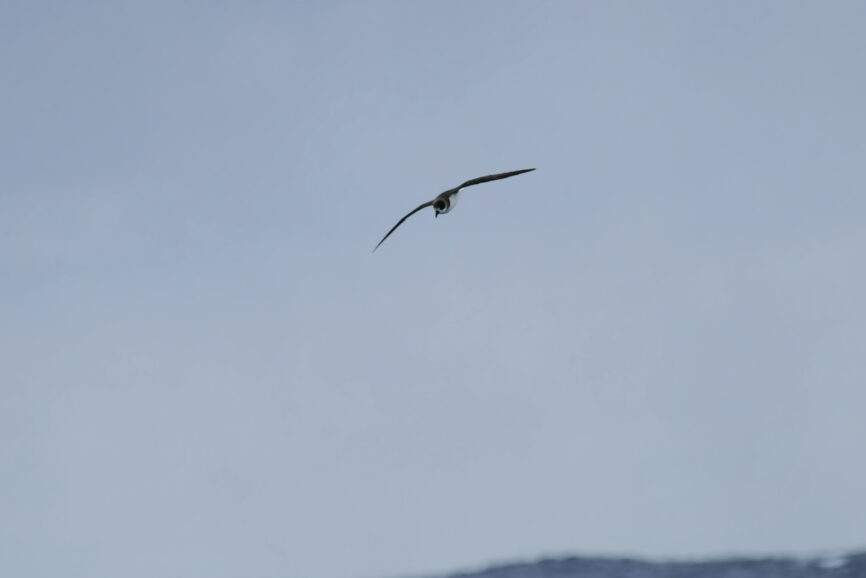A Trip to the Gulf Stream
The time is a little after 5:30 a.m. and there are about 25 people gathered at a dock in Wanchese waiting to board Captain Brian Pattison’s Stormy Petrel 2. It will be an all-day trip, the Stormy Petrel will be heading out to the Gulf Stream in search of pelagic birds—petrels, jaegers, and shearwaters.

These are the birds that live in the open sea, the pelagic zone, and we’re heading out some 30 or 35 miles offshore.
The Stormy Petrel is a good-sized boat—but the trip begins with a safety discussion, and if you’re seasick…go to the stern of the boat. About 6:15 we cast off as the sun begins to turn the eastern sky orange and red.
It takes a while to get to the open sea. Roanoke Sound is flat and calm, but going through Oregon Inlet is a rugged ride. Out on the ocean, the seas are running about 4-6’, but it’s nothing at all like the trip through the inlet.

Pelagic birds as a group are interesting. Most of them, except when they are nesting, spend no time at all on land. We’re maybe 10 miles offshore when we spot the first pelagic bird—Cory’s Shearwater, one of the largest of the pelagic birds, it glides by the boat for a brief period of time, rises into the air, and is gone.
It’s about another hour to the Gulf Stream and it’s not immediately apparent we’re there, although Captain Pattison makes an announcement that we are.

We are seeing more birds now, though. There are five crew members and they stay in constant contact with Pattison, letting him know if they see anything, although a number of the passengers on board clearly have a good working knowledge of pelagic species of birds.
A Long-tailed Jaeger flies by the boat. Graceful in flight, the long tail that gives it its name is barely visible as it flies by.
The Long-tailed Jaeger is not a bird that is easily found—the only way to see one is to take a pelagic ocean trip—or maybe go whale watching well offshore. Or, head to the northern reaches of Canada or even the far northern shore of Greenland where it nests.
Other pelagic birds fly by. A Trindade Petrel flits past the boat almost too quickly to get a picture of it. It’s an interesting species; the bird seems to only breed on a small island, Ilha da Trindade, 680 miles off the coast of Brazil. Except for a small research station, the island is uninhabited, but introduced species from when the island was inhabited may pose a threat to its habitat.
The bird, though, that everyone is hoping to see is the black-capped petrel.
It is a beautiful bird. The body is about the size of a crow, but this is a bird designed for long migration and the wingspan is more than twice the body length. The body is about 16 inches long; the wingspan typically measures 37 inches across. The head, as the name suggests has a black cap to it. There are, apparently, two color variations to the species—a white or light-colored face and a dark or even black face. The variation is most likely from specific nesting sites, although there is no firm evidence of that.
The bird is endangered. At one time they were numerous throughout its range, but its only known nesting locations are on the island of Hispaniola, the Dominican Republic, and Haiti. Predation from invasive species has had an impact, but what has driven the Black-capped Petrel to be listed as threatened is the extraordinary loss of nesting sites as land is cleared for farming and development.
It is a very secretive bird when nesting so a hard count is difficult to determine, but scientists put the number of nesting pairs at no more than 2000.
And then we see one.
It’s a fast-moving bird, but the black cap on its head is unmistakable. Everyone on board has a camera and at this moment the black-capped petrel is the only bird the cameras are pointed at.

Taking a picture of a fast-moving bird from the deck of a boat pitching in the swells of the ocean is certainly an acquired technique. What it comes down to is getting the bird in focus as quickly as possible and then taking as many shots as can be had in the few seconds available as the bird passes by.
Kate Sutherland who has been working with Captain Pattison for over 20 years is finishing a Masters program at UNCW. Her emphasis has been on black-capped petrels, looking specifically at their diet. She seems as excited as everyone else to see the bird and later in the trip two more are sighted—an event that both she and Pattison say does not happen very often.
There are other pelagic birds throughout the day. A couple of Wilson’s Petrels are seen. It’s a hardy little bird, slightly larger than a swallow, but when it’s done with its Gulf Stream foraging it will make an annual migration to Antarctica to nest and breed.
Great Shearwaters also pass by the Stormy Petrel.
Heading back to Wanchese, we have the tide as we cross the Oregon Inlet bar and the crossing is hardly noticeable. As we head to the dock, a pod of dolphin swim in our wake, and in the protected waters of the sound, gulls, brown pelicans, and cormorants are common.
We tie up at the dock at about 5:30.The journey is about eleven and a half to twelve hours. Anyone planning on taking the trip, be sure to pack some food and something to drink. For people who are used to being on the ocean, motion sickness should not be a problem. However, if there is a possibility that motion sickness will be a part of the day, take preventative measures.
The Stormy Petrel will be offering seabirding trips until early October. Check the website for specific dates. Most trips begin in Hatteras, which is the homeport for the boat.
